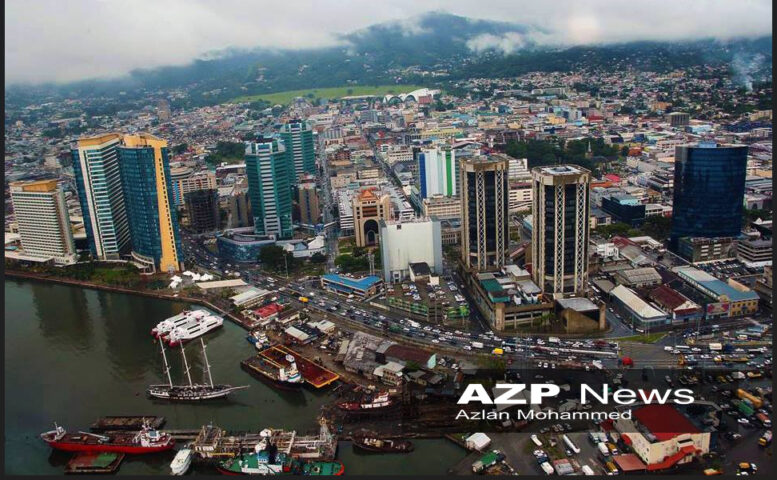‘In my opinion, the most significant event in the post-independence economic history of T&T was the discovery of oil and gas off the east coast in the late 1960’s by Pan American Trinidad Oil Company ‘

AS T&T marks 60 years of independence, an understanding of the economic decisions and events that have shaped the economy and which may propel it for some time is imperative.
Mapping the past 60 years thus requires an appreciation of what happened in the energy sector which has been described as the sine qua non of the economy and which, by 1962, was already the largest contributor to the economy, accounting for around 27.6% of GDP at factor cost.
Following Independence, the government, led by Dr Eric Williams with ANR Robinson as finance minister introduced far-reaching legislation for the financial sector that included reforms to taxation, amendments to the Exchequer and Audit Act, the passage of the Central Bank Act, the passage of the Commercial Banking Act and the Insurance Act.
Prof Selwyn Ryan, writing in the New World Journal, noted that the most controversial of these laws was the Finance Act of 1966. This act sought to treat with tax evasion and discourage repatriation of profits. Significantly, the Finance Act of 1966 introduced Corporation Tax.
It should be noted too that in 1962, the banks in T&T were all foreign concerns. In his book, Mechanics of Independence, ANR Robinson pointed out that the most significant provision of the Commercial Bank Act of 1964 was the provision that, in placing their liquid assets, banks must give preference to short-term instruments originating in T&T. He saw this as advancing the goal of promoting an indigenous capital market.
‘This first oil boom came at an opportune time, given that, in 1973, there was only one month of import cover while unemployment had risen to 15.4%’
Like the banking sector, the petroleum industry was dominated by foreign companies. Oil production was around 134,000 barrels per day while natural gas production was a mere 274 million cubic feet per day.
Direct state participation in the oil industry came in 1969 when the government together with Tesoro acquired the local assets of British Petroleum. While this intervention by the government was historic, it is mainly remembered for the corruption scandal that ensued. In 1969, the government also passed the Petroleum Act which remains the main regulatory instrument of the petroleum industry.
In my opinion, the most significant event in the post-independence economic history of T&T was the discovery of oil and gas off the east coast in the late 1960’s by Pan American Trinidad Oil Company (Pan American).
After drilling a combination of wells that were either dry holes or natural gas discoveries, in late 1968, in its OPR2 well (Offshore Point Radix), Pan American found natural gas and oil. OPR3 and OPR4 drilled in 1969 found more oil. Pan American had discovered the Teak Field.
In 1969, Pan American renamed itself Amoco Trinidad Oil Company and, in 1971, drilled OPR 14 and discovered the Samaan Field and in the following year they discovered the Poui field.
‘Although Jamaican prime minister Michael Manley would rightly declare, in 1980, that money was passing through Trinidad like a “dose of salts,” some of the money was invested to create a new industrial sector’
First oil from Teak and Samaan was realised in 1972. It halted the decline in oil production and turned it around. In 1973, the Yom Kippur War caused a quadrupling of oil prices. This first oil boom came at an opportune time, given that, in 1973, there was only one month of import cover while unemployment had risen to 15.4%.
In 1973, further drilling in the South East Galeota (SEG) and East Mayaro (EM) areas led to the discoveries of the Cassia and Mahogany gas fields. Cassia would support the expansion of the Point Lisas Estate in the 1980’s while Mahogany’s gas was the basis of Atlantic LNG Train 1 in 1999.
The second boom which ran from 1999 to 2008 was therefore initiated by gas from Mahogany and supported by Cassia. The exploration campaign by Pan American (Amoco) from 1962 to 1969, therefore, laid the foundation for not one but two “booms”. These periods were 1973 to 1982 and 1999 to 2008. The former was based on increasing oil production and the latter by natural gas and the Atlantic LNG project.
In 1965, the South Chamber established Plipdeco as the vehicle for the establishment of a deepwater port and industrial estate in South/Central Trinidad, an initiative that was eventually supported by the government.
‘Since 1973, oil and later natural gas have underwritten the economy of T&T’
The third economic development plan also pointed to the wastage of natural gas that was being flared. Added to that, the availability of flat Caroni lands and of natural gas from Amoco set the stage for the Point Lisas project. Natural gas for the early Point Lisas plants (Tringen 1, Fertrin and ISCOTT) as well as a new T&TEC power plant at Point Lisas (completed in 1977) came from Amoco. Although Jamaican prime minister Michael Manley would rightly declare, in 1980, that money was passing through Trinidad like a “dose of salts,” some of the money was invested to create a new industrial sector.
Realising our full economic potential
Writing in the journal Current History in 1969, Dr Williams noted that the goal of the first and second five-year development plans had been to free the human and economic resources of the country from dependence on direction from abroad thus enabling the country to realise its full economic potential.
For some in T&T, Williams was moving too slowly to take control of the Commanding Heights. That angst, catalyzed by events in Canada, would manifest itself in 1970 as the Black Power movement, the aftermath of which led to an acceleration of nationalisation, expansion of the state and an expansion of transfers and subsidies.
All this was however only afforded with the revenue from oil post-1973. Since 1973, oil and later natural gas have underwritten the economy of T&T. There have been moments when our over-dependency on that “one horse” was to our peril. The two worst periods of economic contraction 1983 to 1989 and much more recently, the depression of 2016 to 2021 are due to a combined fall in production and fall in prices.
Can we, in 2022, say that T&T has achieved its full economic potential that Dr Williams envisioned?
From 1908 to 2022, Trinidad and Tobago produced 9.946 billion barrels of oil equivalent (this is a conversion to include natural gas). Of that amount, 8.920 billion barrels of oil equivalent were produced from 1962 to 2022. This is 89.7% of all the oil and natural gas ever produced by T&T. It would be an interesting exercise to value what that 8.920 billion barrels of oil equivalent would be worth.
While there have been achievements in banking, energy, education, and manufacturing these have been overshadowed by corruption, inefficiency, waste, Dutch Disease, and the bipolarity of an economy that remains heavily dependent on one sector. Considering the cohort of countries that gained independence from colonial powers in the 1950s and 1960s, we haven’t done badly but we could have done a lot better given our natural resource endowments.
Charting the course of the future of T&T requires a deep understanding of our past and the courage to eliminate the errors and actions that have held us back for the last sixty years. Change is painful but necessary.
The next government of T&T will have the unenviable and herculean task of setting the course for economic transformation inclusive of diversification and effecting the energy transition. Indeed, every aspect of governance (public service, local government, environmental management, health sector, education, police, and judiciary) needs urgent overhaul and transformation lest we be left behind. The challenges are daunting but not insurmountable.
In 2062, when we mark one hundred years of independence, I will be 90 years old. I hope to live to see a T&T that is one of the best places in the world to live.
Kevin Ramnarine is a former Energy Minister of Trinidad and Tobago (2011 to 2015). He holds an MSc degree in Petroleum Engineering and an MBA. He is currently a Principal Energy Consultant.
![]()














